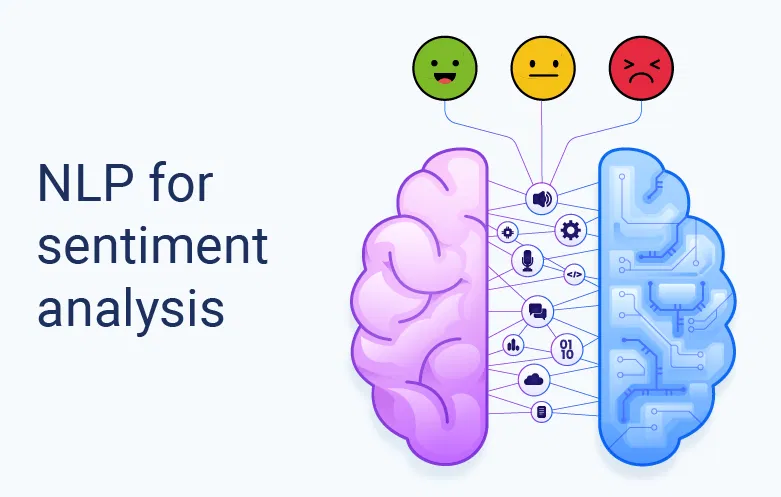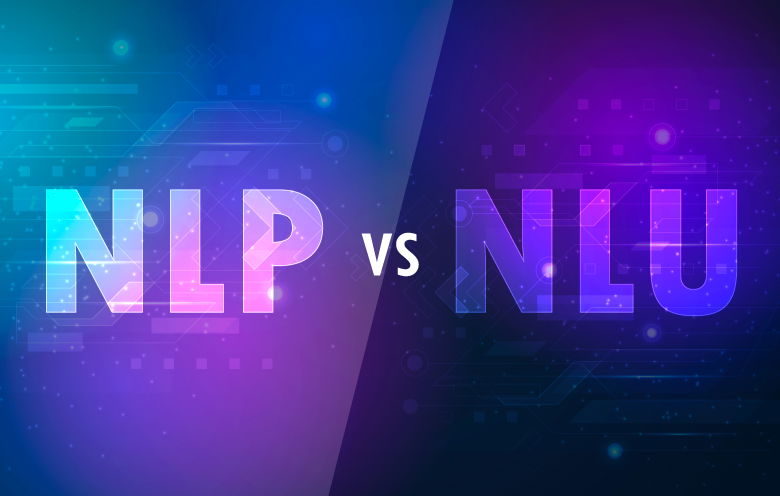Natural Language Processing (NLP) continues to evolve, offering practical value across industries through intelligent data interpretation and language understanding. From improving patient communication in healthcare to streamlining legal contract analysis, NLP for business is evolving rapidly to meet complex demands. As organizations prioritize automation, intelligent insights, and better customer interaction, NLP services are being adopted for everything from sentiment analysis to predictive maintenance. This blog outlines the top natural language processing use cases shaping real-world applications, highlighting how modern enterprises are applying NLP to solve business challenges with greater speed, accuracy, and scalability.
General use case
Natural Language Processing (NLP) helps systems understand, interpret, and generate content or messages in the human language. It empowers machines to accurately process and extract meaning from spoken and written text. This enables AI models to understand language in a natural way. NLP is used in various applications from language translation to voice assistant and beyond. Let’s explore how NLP powers key business functions, starting with conversational AI.
1. Conversational AI
Conversational AI driven by NLP offers scalable customer support, resolves internal queries, and facilitates 24/7 interaction. This minimizes operational expenses, response time, and improves user experience. Nonetheless, managing intricate questions may prove to be difficult for conversational AI. Despite this limitation, companies are advantaged by scalable assistance and enhanced customer satisfaction. This leads to enhanced efficiency and top-notch customer service.
- Example: Erica, Bank of America’s virtual assistant, applies conversational AI to serve millions of customers in monitoring expenditures, viewing balances, and setting payment schedules. It enhances access to services and minimizes workload during operations.
2. Automated speech recognition
Organizations can now convert spoken language into digital text with high accuracy using Automated Speech Recognition (ASR). It streamlines customer service, automates call centers, and facilitates voice-driven interfaces. Businesses can handle a high volume of queries efficiently with natural and real-time responses enhancing the customer experience. Handling various accents, background noise, and maintaining accuracy across language becomes challenging. However, it reduces operational costs, drives productivity, and enhances personalized interaction.
- Example: Alexa, a chatbot by Amazon, processes various voice commands daily with a natural understanding of speaking styles, dialects, and accents.
3. Automatic text summarization
NLP-driven automatic text summarization helps businesses summarize lengthy content into a clear overview without losing vital information. Businesses can make decisions faster by extracting vital points from emails, articles, and customer feedback. While maintaining contextual accuracy and choosing the right summarization model can be challenging, advancements in NLP make execution seamless. Automatic text summarization enhances content accessibility and productivity across departments.
- Example: Bloomberg uses NLP to condense a large volume of financial news articles into concise client briefings, thus enabling readers to grasp data quickly without going through extensive reports.
4. Chatbots
NLP-powered chatbots quickly respond to customer requests, offer 24/7 personalized assistance, and streamline support services. These chatbots handle a high volume of customer interactions, reducing operational delays and enhancing customer satisfaction. Implementing a chatbot requires a large set of data for training and thoughtful integration. However, chatbots driven by NLP enhance customer retention and operational efficiency.
- Example: H&M’s chatbot helps customers find products that match their preferences and style while Sephora’s NLP-powered virtual artist recommends appropriate products by understanding their beauty-related queries.
WHITEPAPER
Everything you need to know about chatbot powered by artificial intelligence

Finance
The finance sector is increasingly adopting NLP models to interpret complex data accurately and quickly. From fraud detection, sentiment analysis to financial reporting, this technology enhances decision-making across all financial operations.
1. Fraud detection
NLP-powered chatbot improves fraud detection by analyzing patterns and inconsistency in transactions and pointing out malicious behavior in real time. These chatbots optimize the verification process by validating responses with stored data to improve speed and accuracy. The challenge lies in training the chatbot to understand various dialects and user intent, which can be solved continuously by training chatbots with real-world conversational data. Effective implementation of chatbot builds customer trust, drives strategic decision-making, and reduces risk.
- Example: Wells Fargo implemented the NLP-powered system to identify potential fraud signs in its corporate financial report, enabling them to identify unusual language patterns before the issue became significant.
2. Risk assessment
The finance sector can improve its risk assessment process by implementing a natural language system with its fraud detection process. It analyzes unstructured data like stock prices, evaluates loan documents and credit scores, and identifies emerging market risks. NLP models detect potential risks and unusual behavior patterns in the initial phase, enabling accurate and faster decision-making. The challenge lies in managing language complexity, which can be addressed with continuous learning and domain-specific models. This approach regulates compliance, builds customer trust, and enhances operational efficiency.
- Example: JPMorgan Chase implements NLP models to assess financial news and economic reports which help them make informed trading strategies.
3. Sentiment analysis for market forecasting
The financial institute uses sentiment analysis to forecast market movements with high accuracy by interpreting customer emotions from reports, news, and social media. AI models learn and identify human emotions such as confidence, worry, optimism, and excitement by analyzing word choice, tone, and context in financial communications. This contributes to early fraud detection by identifying behavior and patterns that are different from typical trends. By addressing model complexity and data transparency, organizations get timely insights to make strategic investment decisions and build relations among stakeholders.
- Example: BlackRock, a multinational investment company, has implemented sentiment analysis for market forecasting to monitor public opinion about the company they invest in, enabling them to identify opportunities or potential risks in the early phase.
4. Financial reporting
Financial institutions use NLP to detect anomalies in transaction patterns and entries that may be an indication of fraud so that the teams can verify data without disrupting the reporting cycle. NLP models, by extracting insights from unstructured financial statements, invoices, contracts, and payment documents, reduce manual verification so that there is transparency and accuracy. Reporting becomes more accurate and quicker, and this allows decision-makers to act confidently while staying abreast of regulatory requirements.
- Example: JP Morgan Chase uses NLP to analyze commercial loan agreements and extract key data from complex documents. This implementation saved costs and reduced errors by 66%.
Retail and e-commerce
NLP is shaping the retail and e-commerce industry by understanding customer intent to streamline decision-making processes. From market intelligence to product recommendations, businesses can design seamless shopping experiences.
1. Market intelligence
NLP helps retailers analyze product reviews, competitor communications, and social media trends to predict pricing strategies, and emerging trends. It simplifies the challenge by quickly identifying product issues before they escalate. It recognizes the shift in consumer preference and analyzes competitive positioning. Thus, allowing businesses to personalize their product offering and stay ahead of market fluctuations.
- Example: Unilever has adopted NLP tools to track consumer reactions to their newly launched products and customize their messages, resulting in effective campaigns and product enhancements.
2. Semantic search enhancement
E-commerce platforms implement advanced semantic search to understand customers’ shopping intentions beyond their keyword. This system addresses the challenge of vague search queries by interpreting long-tail search queries and matching them with product descriptions and reviews. Thus, businesses witness higher engagement, enhanced conversion rates, and intrinsic shopping experience.
- Example: Amazon’s search engine understands vague search queries such as “winter wear dress under $59” that shows the result of affordable and breathable dresses for cold weather.
3. Product recommendation
By implementing NLP into retail, businesses can understand customer preference by analyzing reviews, browsing behavior, and search queries. This eliminates generic or similar product recommendations by creating personalized marketing offerings or campaigns. As a result, businesses witness strong brand loyalty and enhanced shopping experience.
Legal
NLP is automating the legal sector by analyzing and simplifying large volumes of complex legal text. From analyzing contracts to classifying legal documents, it brings clarity, speed, and accuracy to legal workflows.
1. Contract analysis
Legal firms are transforming the review of their legal documents by implementing NLP models that automate the extraction and analysis of vital information from contracts, leases, and legal agreements. Handling different types of contract formats has become challenging, which NLP addresses through trained language models and pattern recognition of legal data. This approach enhances review efficiency, adheres to compliance, and allows the legal team to focus on strategic tasks.
- Example: The law firm Allen & Overy uses an NLP model to classify documents, extract essential provisions, and identify non-standard clauses, reducing review time by 70%, and improving accuracy by 30%.
2. Legal document classification
Legal teams use NLP to automatically sort and categorize documents such as contracts, case files, and court rulings based on content and context. It manages large volumes of unstructured legal text by introducing intelligent automation. As a result, firms can streamline research, reduce review time, and ensure faster access to the right information when it’s needed most.
Healthcare
NLP is digitizing the healthcare sector by enhancing data interpretation and patient interaction. From virtual therapists to disease prediction, it provides personalized and faster care delivery.
1. Virtual therapists
Healthcare sectors are implementing NLP to provide virtual therapies by offering Cognitive Behavioral Therapy (CBT) exercises, guided meditation, and stress reduction techniques for tracking and analyzing mood. The challenge lies in making the interaction feel more natural by interpreting emotions. Training NLP models in real-world dialogue can solve this challenge. This offers accessible mental health support, enhancing patient care delivery beyond clinical hours.
- Example: NHS (National Health Service, UK) uses Wysa, an NLP-powered mental health platform to deliver cognitive behavioral therapy support, 24/7 emotional support and has been clinically validated to reduce symptoms of depression and anxiety.
2. Dictation
Healthcare providers implement NLP to document and analyze the clinical procedures that are dictated by a voice recorder or medical stenographer. This eliminates the need for manual data entry, allowing clinicians to focus more on caregiving than paperwork. This enhances medical decisions, documentation efficiency, and maintains consistent records.
3. Disease prediction
Medical professionals can use NLP models to process patient health records, laboratory reports, and clinical notes and detect early indicators of disease development. By transforming complicated medical information into strategic information, medical professionals overcome the problem of disintegrated and unstructured medical records. This provides early risk assessment, anticipatory caregiving, efficient treatment plans, and better patient health outcomes.
Manufacturing
NLP implementation in the manufacturing industry enhances precision and foresight by analyzing technical manuals, compliance records, and sensor data. It supports maintenance schedules and quality checks and promotes innovation through IP and patent analysis.
1. Predictive maintenance
NLP is used by manufacturers to extract data from sensors, tech notes, and maintenance records to identify anomalies and produce early warning signals. With this method, the interpretation of unstructured data is avoided since it converts the data into usable information. Hence, companies can plan repairs ahead of time, reduce downtime, and improve asset quality.
- Example: Siemens, a manufacturing firm, uses AI-based predictive maintenance to anticipate equipment failure and schedule maintenance before the issue escalates.
2. Quality control
NLP models analyze customer reviews, inspection records, and production reports to detect product issues and trends. This improves the data quality by interpreting and organizing test-based inputs from various sources. NLP helps businesses enhance customer satisfaction, improve quality control processes, and boost productivity.
- Example: General Electric uses NLP to improve quality control in its manufacturing operations by detecting recurring product issues from technician notes, inspection reports, and customer feedback.
3. Intellectual Property (IP) and patent analysis
NLP models scan global database patterns, IP fillings, and technical documents to promote potential innovation and avoid overlaps. It helps researchers understand complex legal language and large sets of patents with high accuracy and speed. Thus, businesses can speed up research and development, enhancing product development decision-making processes.
HR
NLP is reshaping HR processes by offering deep analysis of candidate resumes and qualifications. From evaluating resumes to assessing interviews, it chooses the right candidate more quickly and efficiently.
1. Interview assessment
NLP automates resume interpretation, matching skills and experience with job requirements. It also promotes virtual interviews by analyzing candidate responses by deeply understanding their tone, clarity, and keywords aligned to job responsibilities. This eliminates the subjective evaluation by offering data-driven insights. As a result, it leads to quick and accurate hiring, and improved alignment between business needs and potential candidates.
- Example: Unilever uses an NLP-powered platform for its campus recruitment, reducing its hiring timeline, increasing diversity by 16% and retention rates by 25%.
Telecom
NLP is reshaping the telecom industry by turning unstructured data into real-time insights. It adds intelligence to every connection whether it is decoding network traffic, enhancing customer experience, or delivering personalized offerings.
1. Network traffic insights
NLP models analyze logs, customer feedback, and service tickets to learn network performance patterns. This simplifies the process of identifying usage patterns and detecting areas that need immediate attention without manual review. Thus, telecom providers can streamline traffic flow, enhance uptime, and improve user experience.
- Example: Vodafone uses NLP to identify network traffic issues, detect recurring service issues, and prioritize infrastructure improvements. This reduces resolution times and increases network reliability.
2. Customer experience enhancement
Telecom companies implement NLP to understand and analyze customer feedback and call transcripts. NLP manages a high volume of client communications across various platforms. It helps businesses analyze customer intent and sentiments across multiple platforms by turning scattered data into data-driven insights. Thus, teams can respond faster, build strong relations with customers, and provide customized support.
- Example: AT&T uses NLP to detect frustration in customer tone or language and escalate to human agents when needed, decreasing issue resolution time and increasing customer satisfaction.
3. Personalization at scale
NLP models help telecom companies to analyze and understand customer preferences and behavior from various touch points. Thus, they can offer personalized offerings by identifying customer behavior, analyzing sentiment, topic modeling, and text classification. This results in efficient customer engagement, and an improved retention rate.
Cybersecurity
NLP is transforming cybersecurity by identifying patterns in emails, logs, and network traffic to detect potential threats in early stages of the cybersecurity process. It identifies unusual behavior; filters spam and protects vital data from malicious attacks.
1. Spam detection
Natural Language Processing (NLP) is revolutionizing spam detection by identifying early signals and content patterns to flag suspicious messages. It learns evolving spam tactics from intent, tone, and context. This leads to reduced security risk and improved communication across the organization.
- Example: Google’s Gmail uses NLP to analyze message content, examine linguistic patterns, and evaluate sender behavior to identify spam accurately. This brought a 60% reduction in user-reported spam and a 35% decrease in false positives.
2. Data exfiltration prevention
Organizations can leverage NLP to analyze file transfer, internal communication, and user behavior to indicate unauthorized data movement. This approach simplifies the complexity of detecting language-based and contextual signs within a large set of unstructured data. This enables early spam detection, prevents data loss, and strengthens security postures.
- Example: Raytheon uses an NLP-powered security system to detect data exfiltration, by identifying unusual patterns. It blocked the transfer of vital data, preventing a major breach and safeguarding intellectual property worth millions of dollars.
Still exploring how NLP fits into your business
Talk to our NLP experts today to discover solutions tailored to your goals, data, and industry requirements.
Turning NLP potential into practical impact
Understanding these natural language processing use cases is only the starting point. As NLP for business continues to mature, organizations must now assess which applications align with their goals, data readiness, and operational scale. Choosing the right NLP services requires clarity on specific needs, whether it’s automating support for a mid-sized company or enhancing compliance in enterprise environments. Investing in education, pilot projects, and trusted technology partners can make implementation more effective. With thoughtful evaluation and the right strategy, businesses can move from exploring NLP to embedding it into core operations for measurable impact in 2025 and beyond.



